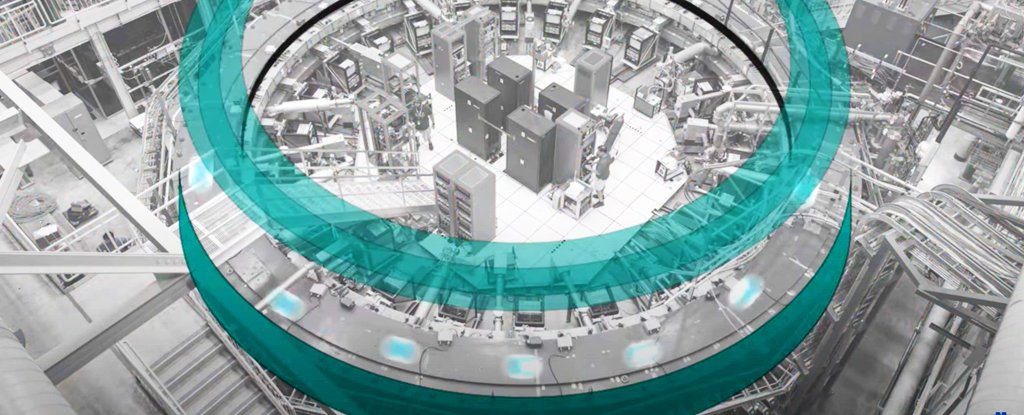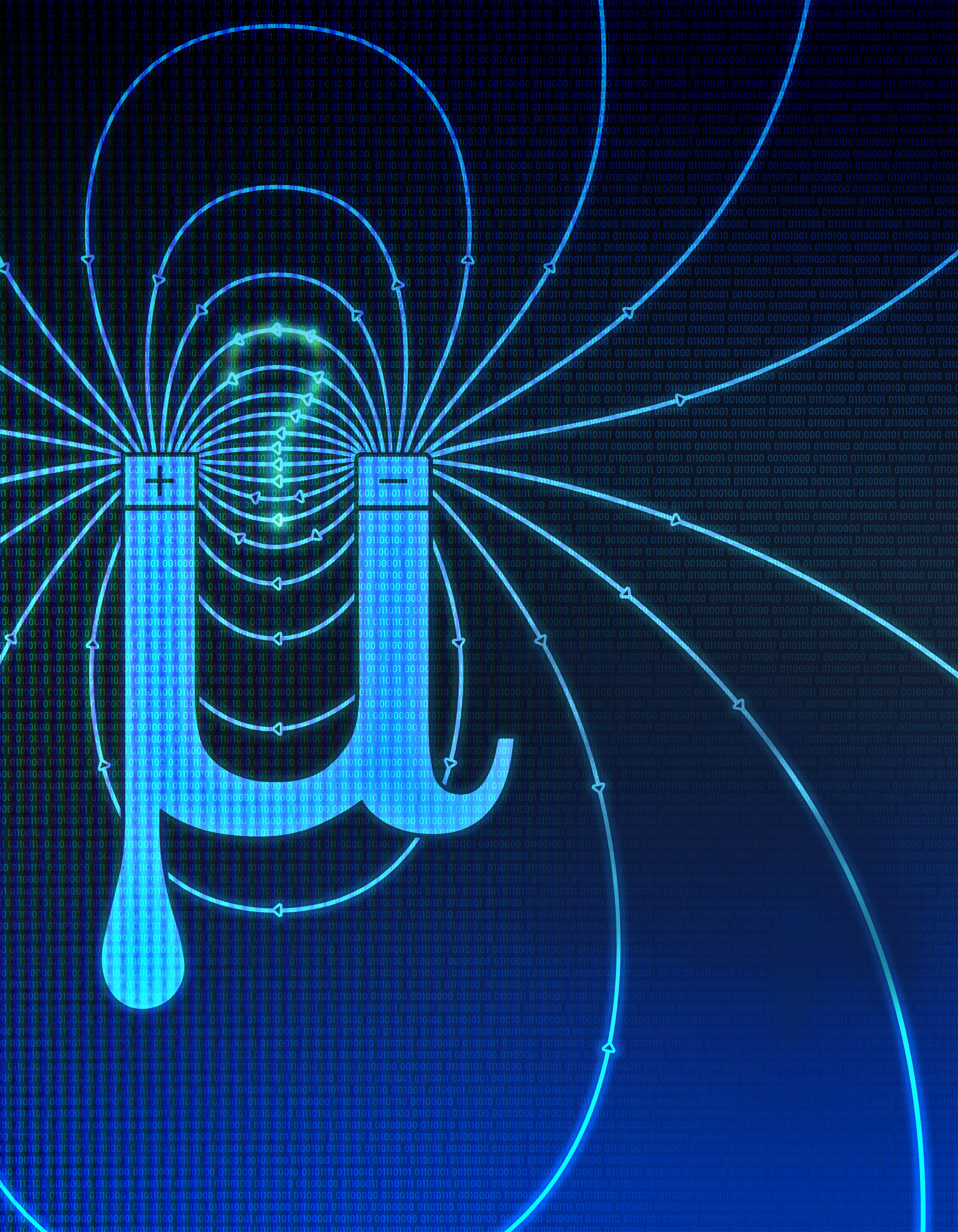Chance of statistical error, 1 in 40,000

 phys.org
phys.org
Scientists from the U.S. Department of Energy's (DOE) Argonne National Laboratory and Fermi National Accelerator Laboratory, along with collaborators from 46 other institutions and seven countries, are conducting an experiment to put our current understanding of the universe to the test. The first result points to the existence of undiscovered particles or forces. This new physics could help explain long-standing scientific mysteries, and the new insight adds to a storehouse of information that scientists can tap into when modeling our universe and developing new technologies.
The experiment, Muon g-2 (pronounced Muon g minus 2), follows one that began in the '90s at DOE's Brookhaven National Laboratory, in which scientists measured a magnetic property of a fundamental particle called the muon.
The Brookhaven experiment yielded a result that differed from the value predicted by the Standard Model, scientists' best description of the makeup and behavior of the universe yet. The new experiment is a recreation of Brookhaven's, built to challenge or affirm the discrepancy with higher precision.
The Standard Model very precisely predicts the muon's g-factor—a value that tells scientists how this particle behaves in a magnetic field. This g-factor is known to be close to the value two, and the experiments measure their deviation from two, hence the name Muon g-2.
The experiment at Brookhaven indicated that g-2 differed from the theoretical prediction by a few parts per million. This miniscule difference hinted at the existence of unknown interactions between the muon and the magnetic field—interactions that could involve new particles or forces.
The first result from the new experiment strongly agrees with Brookhaven's, strengthening the evidence that there is new physics to discover. The combined results from Fermilab and Brookhaven show a difference from the Standard Model at a significance of 4.2 sigma (or standard deviations), slightly less than the 5 sigma that scientists require to claim a discovery, but still compelling evidence of new physics. The chance that the results are a statistical fluctuation is about 1 in 40,000.
Particles beyond the Standard Model could help to explain puzzling phenomena in physics, such as the nature of dark matter, a mysterious and pervasive substance that physicists know exists but have yet to detect.
"This is an incredibly exciting result," said Argonne's Ran Hong, a postdoctoral appointee who worked on the Muon g-2 experiment for over four years. "These findings could have major implications for future particle physics experiments and could lead to a stronger grasp on how the universe works."
The Argonne team of scientists contributed significantly to the success of the experiment. The original team, assembled and led by physicist Peter Winter, included Argonne's Hong and Simon Corrodi, as well as Suvarna Ramachandran and Joe Grange, who have since left Argonne.
"This team has an impressive and unique skill set with high expertise regarding hardware, operational planning and data analysis," said Winter, who leads the Muon g-2 contributions from Argonne. "They made vital contributions to the experiment, and we could not have obtained these results without their work."
To derive the muon's true g-2, the scientists at Fermilab produce beams of muons that travel in a circle through a large, hollow ring in the presence of a strong magnetic field. This field keeps the muons in the ring and causes the direction of a muon's spin to rotate. The rotation, which scientists call precession, is similar to the rotation of earth's axis, only much, much faster.
To calculate g-2 to the desired precision, the scientists need to measure two values with very high certainty. One is the rate of the muon's spin precession as it traverses the ring. The other is the strength of the magnetic field surrounding the muon, which influences its precession. That's where Argonne comes in.
Field trip
Although the muons travel through an impressively constant magnetic field, ambient temperature changes and effects from the experiment's hardware cause slight variations throughout the ring. Even these small shifts in field strength, if not accounted for, can significantly impact the accuracy of the g-2 calculation.
In order to correct for the field variations, the scientists constantly measure the drifting field using hundreds of probes mounted to the walls of the ring. In addition, they send a trolley around the ring every three days to measure the field strength where the muon beam actually passes through. Mounted on the trolley are probes that map out the magnetic field with incredibly high precision throughout the ring's 45-meter circumference.
To reach the ultimate uncertainty goal of less than 70 parts per billion (around 2.5 times better than the field measurement in the previous experiment), Argonne scientists refurbished the trolley system used in the Brookhaven experiment with advanced communication abilities and new, ultraprecise magnetic field probes developed by the University of Washington.
The trolley goes around the ring in both directions, taking around 9,000 measurements per probe and direction. The scientists use the measurements to reconstruct slices of the magnetic field and then derive a full, 3D map of the field in the ring. Field values at points on the map go into the g-2 calculation for muons passing through those locations. The better the field measurements, the more meaningful the final result.
The scientists also converted some of the analog signals used in the old experiment into digital signals to increase the amount of data they could obtain from the probes. This required complex engineering of the trolley's communications system to minimize disturbances to the sensitive probing mechanisms.
"It was quite challenging to make the trolley operate smoothly and safely. It required the control system to handle routine operations but also identify emergencies and react appropriately," said Hong, whose background in both scientific research and engineering was crucial for designing the trolley to operate with limited disruption to the experiment.
The team plans to upgrade the trolley system for the next data taking period to further improve the measurements by reducing the uncertainty bit by bit.
A less technical description https://www.bbc.com/news/56643677
"I have been looking all my career for forces and particles beyond what we know already, and this is it. This is the moment that I have been waiting for and I'm not getting a lot of sleep because I'm too excited."
The Muon g-2 experiment involves sending the particles around a 14-metre ring and then applying a magnetic field. Under the current laws of physics, encoded in the Standard Model, this should make the muons wobble at a certain rate.
Instead, the scientists found that muons wobbled at a faster rate than expected. This might be caused by a force of nature that's completely new to science.
No one yet knows what this potential new force does, other than influence muon particles.
Theoretical physicists believe that it might also be associated with an as-yet undiscovered sub-atomic particle. There is more than one concept for what this hypothetical particle might be. One is called a leptoquark, another is the Z' boson (Z-prime boson).
A fifth fundamental force might help explain some of the big puzzles about the Universe that have exercised scientists in recent decades.
For example, the observation that the expansion of the Universe was speeding up was attributed to a mysterious phenomenon known as dark energy. But some researchers have previously suggested it could be evidence of a fifth force.
Dr Maggie Aderin-Pocock, co-presenter of the BBC's Sky at Night programme, told BBC News: "It is quite mind boggling. It has the potential to turn physics on its head. We have a number of mysteries that remain unsolved. And this could give us the key answers to solve these mysteries."

Field guides: Scientists bolster evidence of new physics in Muon g-2 experiment
Scientists are testing our fundamental understanding of the universe, and there's much more to discover.
Scientists from the U.S. Department of Energy's (DOE) Argonne National Laboratory and Fermi National Accelerator Laboratory, along with collaborators from 46 other institutions and seven countries, are conducting an experiment to put our current understanding of the universe to the test. The first result points to the existence of undiscovered particles or forces. This new physics could help explain long-standing scientific mysteries, and the new insight adds to a storehouse of information that scientists can tap into when modeling our universe and developing new technologies.
The experiment, Muon g-2 (pronounced Muon g minus 2), follows one that began in the '90s at DOE's Brookhaven National Laboratory, in which scientists measured a magnetic property of a fundamental particle called the muon.
The Brookhaven experiment yielded a result that differed from the value predicted by the Standard Model, scientists' best description of the makeup and behavior of the universe yet. The new experiment is a recreation of Brookhaven's, built to challenge or affirm the discrepancy with higher precision.
The Standard Model very precisely predicts the muon's g-factor—a value that tells scientists how this particle behaves in a magnetic field. This g-factor is known to be close to the value two, and the experiments measure their deviation from two, hence the name Muon g-2.
The experiment at Brookhaven indicated that g-2 differed from the theoretical prediction by a few parts per million. This miniscule difference hinted at the existence of unknown interactions between the muon and the magnetic field—interactions that could involve new particles or forces.
The first result from the new experiment strongly agrees with Brookhaven's, strengthening the evidence that there is new physics to discover. The combined results from Fermilab and Brookhaven show a difference from the Standard Model at a significance of 4.2 sigma (or standard deviations), slightly less than the 5 sigma that scientists require to claim a discovery, but still compelling evidence of new physics. The chance that the results are a statistical fluctuation is about 1 in 40,000.
Particles beyond the Standard Model could help to explain puzzling phenomena in physics, such as the nature of dark matter, a mysterious and pervasive substance that physicists know exists but have yet to detect.
"This is an incredibly exciting result," said Argonne's Ran Hong, a postdoctoral appointee who worked on the Muon g-2 experiment for over four years. "These findings could have major implications for future particle physics experiments and could lead to a stronger grasp on how the universe works."
The Argonne team of scientists contributed significantly to the success of the experiment. The original team, assembled and led by physicist Peter Winter, included Argonne's Hong and Simon Corrodi, as well as Suvarna Ramachandran and Joe Grange, who have since left Argonne.
"This team has an impressive and unique skill set with high expertise regarding hardware, operational planning and data analysis," said Winter, who leads the Muon g-2 contributions from Argonne. "They made vital contributions to the experiment, and we could not have obtained these results without their work."
To derive the muon's true g-2, the scientists at Fermilab produce beams of muons that travel in a circle through a large, hollow ring in the presence of a strong magnetic field. This field keeps the muons in the ring and causes the direction of a muon's spin to rotate. The rotation, which scientists call precession, is similar to the rotation of earth's axis, only much, much faster.
To calculate g-2 to the desired precision, the scientists need to measure two values with very high certainty. One is the rate of the muon's spin precession as it traverses the ring. The other is the strength of the magnetic field surrounding the muon, which influences its precession. That's where Argonne comes in.
Field trip
Although the muons travel through an impressively constant magnetic field, ambient temperature changes and effects from the experiment's hardware cause slight variations throughout the ring. Even these small shifts in field strength, if not accounted for, can significantly impact the accuracy of the g-2 calculation.
In order to correct for the field variations, the scientists constantly measure the drifting field using hundreds of probes mounted to the walls of the ring. In addition, they send a trolley around the ring every three days to measure the field strength where the muon beam actually passes through. Mounted on the trolley are probes that map out the magnetic field with incredibly high precision throughout the ring's 45-meter circumference.
To reach the ultimate uncertainty goal of less than 70 parts per billion (around 2.5 times better than the field measurement in the previous experiment), Argonne scientists refurbished the trolley system used in the Brookhaven experiment with advanced communication abilities and new, ultraprecise magnetic field probes developed by the University of Washington.
The trolley goes around the ring in both directions, taking around 9,000 measurements per probe and direction. The scientists use the measurements to reconstruct slices of the magnetic field and then derive a full, 3D map of the field in the ring. Field values at points on the map go into the g-2 calculation for muons passing through those locations. The better the field measurements, the more meaningful the final result.
The scientists also converted some of the analog signals used in the old experiment into digital signals to increase the amount of data they could obtain from the probes. This required complex engineering of the trolley's communications system to minimize disturbances to the sensitive probing mechanisms.
"It was quite challenging to make the trolley operate smoothly and safely. It required the control system to handle routine operations but also identify emergencies and react appropriately," said Hong, whose background in both scientific research and engineering was crucial for designing the trolley to operate with limited disruption to the experiment.
The team plans to upgrade the trolley system for the next data taking period to further improve the measurements by reducing the uncertainty bit by bit.
A less technical description https://www.bbc.com/news/56643677
"I have been looking all my career for forces and particles beyond what we know already, and this is it. This is the moment that I have been waiting for and I'm not getting a lot of sleep because I'm too excited."
The Muon g-2 experiment involves sending the particles around a 14-metre ring and then applying a magnetic field. Under the current laws of physics, encoded in the Standard Model, this should make the muons wobble at a certain rate.
Instead, the scientists found that muons wobbled at a faster rate than expected. This might be caused by a force of nature that's completely new to science.
No one yet knows what this potential new force does, other than influence muon particles.
Theoretical physicists believe that it might also be associated with an as-yet undiscovered sub-atomic particle. There is more than one concept for what this hypothetical particle might be. One is called a leptoquark, another is the Z' boson (Z-prime boson).
A fifth fundamental force might help explain some of the big puzzles about the Universe that have exercised scientists in recent decades.
For example, the observation that the expansion of the Universe was speeding up was attributed to a mysterious phenomenon known as dark energy. But some researchers have previously suggested it could be evidence of a fifth force.
Dr Maggie Aderin-Pocock, co-presenter of the BBC's Sky at Night programme, told BBC News: "It is quite mind boggling. It has the potential to turn physics on its head. We have a number of mysteries that remain unsolved. And this could give us the key answers to solve these mysteries."




